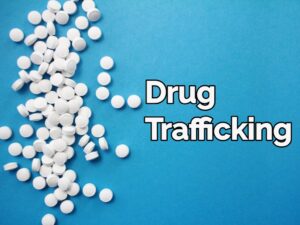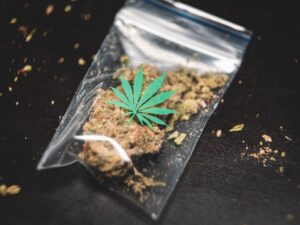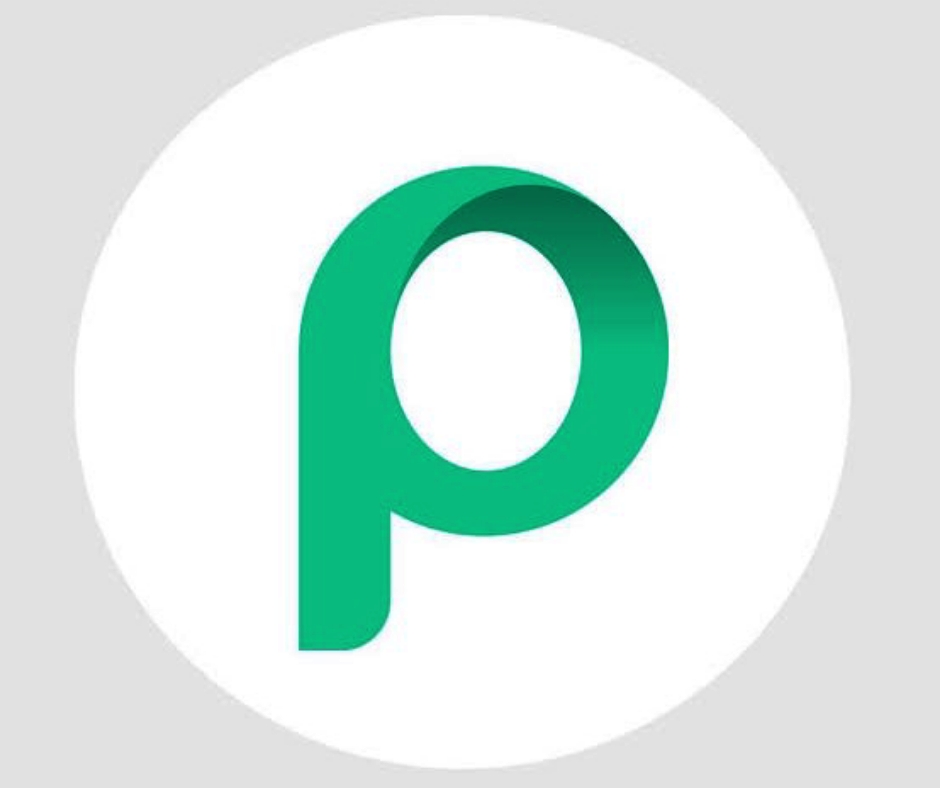Countries with the Highest Number of Drug Trafficking in Africa: In the complicated landscape of Africa’s socioeconomic issues, drug trafficking has emerged as a crucial issue. This blog post goes into the countries with the greatest rates of drug trafficking on the continent. From clandestine operations to sociopolitical ramifications, we investigate the elements that contribute to the predominance of this illegal commerce.
The article examines the interconnections of geography, governance, and international relations, shedding light on the various forces at play. Join us on this journey to better grasp the intricate network of drug trafficking and its impact on African nations.

Top
1. Guinea Bissau: While heroin smuggling occurs in Guinea-Bissau, it is limited. By contrast, the country is a major trans-shipment point in international cocaine trafficking routes, and a significant entry point for cocaine transiting West Africa. The country plays a crucial role in connecting South American cocaine producers with consumer markets in Europe. Since 2016, Brazil has become an increasingly important export point for cocaine reaching West Africa, including Guinea-Bissau, leveraging both sea and air routes.
The majority of cocaine enters Guinea-Bissau through maritime routes, taking advantage of the country’s extremely porous coastline, although smaller volumes enter by air. The majority is then exported towards Europe. The cocaine trade has long enjoyed a high degree of state corruption, with elements within the military, political and criminal justice infrastructure implicated in protecting the trade. The 2022 Supreme Court acquittal of two notorious and previously convicted cocaine traffickers further heightened concerns of criminal capture of the judicial system. Cocaine is widely believed to contribute to electoral financing in Guinea-Bissau.
In Guinea-Bissau, cannabis remains the most-commonly-used drug among youth. The country serves as a transit point for cannabis produced in neighboring countries, destined for European markets. There is also local production of cannabis in small quantities along the Guinean-Bissau border with Senegal.
There are some reports of synthetic drug trafficking and consumption, including of methamphetamines. However, the scale is currently unknown. A recent study conducted on injectable drugs reveals that mehamphetamine are emerging as the most frequently used drug in some parts of the country, ranging from 36% of participants in Bissau to 74% in Gabú.
2. Cabo Verde: The country is viewed as an easy trans-shipment point for heroin destined for North Africa and the European markets. Heroin is also consumed on the islands, although the size and impact of consumption are unclear. The country has also emerged as a key trans-shipment hub for cocaine, facilitating the movement of drugs from South America (particularly Brazil) to European destinations, particularly Spain. The country’s strategic location on the trans-Atlantic drug trade route, known as Highway 10, makes it an ideal stopover for drug traffickers, who use it to refuel, store their products and ship them to their final destinations.
Praia, with its historical, economic and cultural ties with Portugal, plays a crucial role in the ‘cocaine corridor’. The main airport also serves as a transit point for drug trafficking, particularly on flights originating from Brazil and other Latin American countries. São Paulo is a significant source of drugs entering the country by air. The link between drug trafficking and money laundering is evident, as proceeds from the cocaine trade are reinvested in Praia through construction companies, facilitated by certain banks.
The consumption of and trade in cannabis is widespread in Cabo Verde. The police have seized numerous caches on various islands, with Santa Catarina de Santiago emerging as a major centre for production, consumption and trafficking. Recent cases have involved large quantities of cannabis confiscated from plantations in the area. Cabo Verde also serves as a transit country for cannabis trafficked from other African production points.
For instance, armed groups in the Sahel region reportedly use the islands as a route for transporting cannabis resin to markets in Europe. In terms of synthetic drugs, methamphetamine is present and MDMA (ecstasy) is available on the popular tourist islands of Sal and Boa Vista. With the considerable reduction in tourism in the archipelago during the COVID-19 pandemic, the quantity of synthetic drugs available in the country has decreased slightly.
Benin
Benin is a transit hub for heroin being moved through Africa, destined for the European markets. The heroin trade in Benin is not typically associated with violence. Cotonou Airport is the main transit point for this route, with drugs being smuggled in aircraft parts. Although there is no comprehensive quantitative data on drug use, domestic use of heroin is believed to be limited.
Benin is a far more significant transit hub for the trafficking of cocaine to Europe. Most of the cocaine is brought in by sea through the port of Cotonou. Criminal networks have been using the port to bring cocaine from Latin America into West Africa for many years. Recent large seizures of the drug have led to the arrest of nationals from different countries, pointing to extensive transnational networks and corruption among Beninese security forces. Multiple indicators – including record production rates in Latin America, the expanding European consumption market, and elevated seizures in West Africa – indicate that the volume moving through West Africa may be greater than ever before, enabled by a robust protection system on the part of state-embedded actors.
The cultivation, sale, and possession of cannabis for recreational purposes is illegal in Benin. Cannabis is produced locally – though mostly on a small scale – and very low levels of violence, if any, are associated with the trade. Recent information from enforcement agencies at the Nigerian-Benin border indicates cross-border trafficking, including from Ghana to Nigeria, where more potent cannabis is now being produced. There have also been increasing reports of the seizure of cannabis resin in the capital.
There has been a decrease in recorded imports of Tramadol, which arrives primarily from India, and in increasingly higher proportion, Pakistan and China, by sea and to a lesser extent by air. There is some evidence to suggest a reduction in both supply and demand for the non-medical use of Tramadol due to a combination of factors including rising prices and a concerted effort on the part of the state to crack down on the illicit market (however, as the market has also become more clandestine, this is difficult to evidence conclusively).
Tramadol is also produced in Ghana and Nigeria and is suspected to be manufactured in clandestine laboratories elsewhere within West Africa, including, potentially, in Cotonou. Although the port’s importance as an entry point for Tramadol has decreased, sporadic seizures suggest that some flows continue, and the drug is trafficked on trucks and motorcycles along the borders with Togo, Niger, Burkina Faso and Nigeria. It is suspected that there is also methamphetamine in the country, but on a far smaller scale.
3. The Gambia: The Gambia serves as a transit country for heroin en route to Europe and the United States. Weak coastal and border controls, coupled with corrupt individuals within the border control service, make the country an ideal transit point. The Gambia also plays a significant role in cocaine trafficking, connecting South America to European and African markets. Organized drug trafficking groups have established the country as a hub, using its maritime ports and airports to transport large quantities of cocaine.
There has also been an increase in the domestic cocaine market, fuelled, in part, by tourism of mainly European visitors. Drug traffickers transport cocaine and cannabis in canoes along rivers that connect to Senegal.
The cannabis trade is significant, and cannabis is the most commonly seized drug in the country. While most cannabis originates from the Casamance region in Senegal and Sierra Leone, it also grows naturally within The Gambia, making it easily accessible. The government opposes the decriminalization of cannabis and confiscates more than a metric ton of marijuana annually. The COVID-19 pandemic led to an increase in cannabis production and informal sector sales as people sought income opportunities.
Individuals of all ages, including children as young as nine, are involved in the cannabis trade and have been arrested for possession.
The use of synthetic drugs, including opioids, amphetamine-type stimulants and new psychoactive substances, is on the rise in Africa. While synthetic drugs play a relatively small role in The Gambia, there is reported growth in the local ecstasy market.
The abuse of drugs such as Diazepam and Clonazepam is also increasing among the youth, and according to officials, there have been some seizures of synthetic cannabinoids. Benzodiazepines are commonly traded in the country and the fact that the pharmaceutical market is poorly regulated has led to the diversion and misuse of drugs, resulting in tragic consequences, including the deaths of children. While there have been some reports of local methamphetamine production, these have not been fully substantiated. The Gambia, in fact, is known to predominantly serve as a transit point for methamphetamine manufactured in Nigeria.
4. Nigeria: Nigeria has emerged as a major transit point for the global heroin trade, with drug traffickers using the country to smuggle large quantities of heroin to Europe and North America. Nigerian trafficking groups collaborate with drug cartels in South America, Afghanistan, and Pakistan, and state corruption facilitates these operations. The country also experiences a relatively high rate of heroin use, driven by factors such as easy drug access, poverty, job insecurity, and unemployment. Nigeria also serves as a significant transit point for trafficked cocaine, destined for various global markets. Nigerian actors are prominent on the intra-African trade routes, particularly on air trafficking routes.
Nigerian networks are also prominent in air trafficking of cocaine shipments primarily from Brazil to markets in Europe, the Middle East, and Asia, utilizing a network of co-conspirators within the diaspora. Authorities have reported multiple large cocaine seizures and subsequent arrests.
Nigeria serves as a significant hub for the cannabis trade, being a country of origin, departure, and transit for the drug. The cultivation of cannabis is prevalent in Nigeria, particularly in the south-west region, with its favourable weather conditions. Notably, Nigeria experiences large-scale seizures of cannabis. This illicit trade is facilitated by institutional weaknesses, porous borders, and widespread corruption within the country.
The Nigeria–Chad border, specifically through Maiduguri, is notorious for cannabis smuggling. Additionally, authorities have found evidence of a new type of cannabis trafficked from Ghana, believed to possess superior quality, processing, and packaging compared to locally produced cannabis.
Nigeria plays a significant role in the trade of synthetic drugs, including psychotropic substances such as tramadol and amphetamines.
The smuggling of tramadol, in particular, is prevalent, with Lagos serving as a major market for the drug, which originates from other continents such as Asia and enters the country through Benin. Tramadol is distributed both legally and illegally from Lagos to various parts of Nigeria, notably Edo and Kano states. Nigeria’s porous borders and the complicity of government officials contribute to the ease with which tramadol and other substances are illicitly traded. Indian manufacturers are known to rebrand synthetic opioids extremely similar, or equivalent, to tramadol as ‘Tafrodol’ to avoid detection by customs officials at entry points in Nigeria.
5. Senegal: Seizures of heroin in Senegal are less frequent than those of cocaine and other drugs, and trade of this substance is believed to be relatively small-scale when compared to other countries in the region. However, over the past decade Senegal has become a crucial transit hub for the trafficking of cocaine into Europe, facilitated by its strategic location, political instability in neighbouring countries, and its extensive coastal areas. Despite these factors, the cocaine trade is not associated with significant violence. The development of a new container port close to Dakar could facilitate expansion of illicit shipments in the future.
The trade and use of cannabis in Senegal continues to be widespread, particularly in the southern Casamance region. Cannabis cultivation in that area is carried out by the MFDC and the local population, with the Karones Islands near The Gambia being a hotspot for production and sale. The economic benefits of cannabis, which fetches a higher price than other crops, drive its cultivation. Senegal also serves as a transit point for regional cannabis trade, primarily of resin, with Dakar being a key hub for onward distribution to neighbouring countries.
The synthetic drug trade in Senegal is of a smaller scale than other forms of drug trafficking. While Senegal does not produce synthetic drugs, it reportedly serves as a transit country for their distribution. Tramadol, which is widely abused in West Africa, is consumed to some extent in the mining areas of Kedougou Region. The drug is trafficked from Mali and Guinea. Amphetamine use is also reported among Chinese construction workers in the country and among the professional wrestling community.
6. South Africa: The heroin trade generates billions of rand in annual revenue in South Africa, making it a significant commodity. It has also led to the country becoming one of the largest heroin consumer markets on the continent, with the market being controlled by violent gangs in major cities.
These organized criminal groups originate in South Africa and both southern and West Africa, with direct links to South Asian networks. In Durban, drug gangs have begun selling cheap heroin packed into pharmaceutical-style capsules, known on the street as ‘caps’. South Africa has become a critical node in international Afghan-produced heroin smuggling rings to Europe, Africa and Australia, and sometimes for Pakistani or Iranian heroin. The drug is trafficked along what is referred to as the ‘southern’ or the ‘maritime route’ from the southern coasts of Pakistan and Iran by boat through the Indian Ocean.
South Africa has also become a key player in the global cocaine trade, with a growing domestic market and connections to Europe, Hong Kong and Australia. Most of the cocaine comes in shipping containers from Brazil and then transits through South Africa to other destinations. The country’s high-level police corruption, excellent transport infrastructure and resource shortages in drug control facilitate the transit of the drug. South Africa also has the highest prevalence of cocaine consumption in Africa, with international, regional and domestic groups involved in its distribution.
In contrast to cocaine and heroin, cannabis is the most widely used drug in South Africa, but the trade is moderate compared to other high-prevalence consumer countries on the continent. Domestic and regional organized criminal groups, in conjunction with corrupted state security officials, facilitate the trade of cannabis by air, land and sea routes. However, the illegal movement and sale of cannabis have not generally been characterized by violence, and South Africa has seen a dramatic reduction in cannabis seizures. Cannabis for local consumption is produced and grown in South Africa predominantly in KwaZulu-Natal and the Eastern Cape, as well as in neighbouring countries such as Lesotho, Swaziland and Malawi. Due to legalization, there have been shifts in the country’s production, with less demand for low-grade cannabis.
Regarding synthetic drugs, South Africa has become a new trafficking route for methamphetamine to East Asia. While the manufacture of the drug exists in South Africa, the country is also a transit hub for methamphetamine sourced from Nigeria and Western Asia. Recent seizures suggest that there is an influx of Afghan methamphetamine being trafficked into Africa through South Africa, which is also a major consumer market for the drug.
Gang distribution and control of the ‘tik’ market are present in Cape Town, Johannesburg and Nelson Mandela Bay. Estimated methamphetamine use levels in some areas of the country are among the highest reported in the world, suggesting that the number of users may be far higher than previously thought. Chinese syndicates appear to be providing chemical precursors for West African and Nigerian methamphetamine production and distribution syndicates in South Africa.
South African crime groups have reportedly exchanged abalone catches for methamphetamine, forging cash-free trade relationships with Cape gangs that control the local drug market. Although the Mandrax market is not as lucrative as other drugs, it is still popular in South Africa, with India and China being the suspected sources of precursors.
7. Angola: The heroin market has very little influence in the country. However, evidence suggests that the country is becoming a growing transit state for Afghan heroin moving towards Europe. Conversely, Angola is a cocaine trafficking hub, acting as a trans-shipment country for South American cocaine, mostly originating from Brazil and destined for Southern and West African countries as well as markets in Europe and the Middle East by sea and air. The country’s shared language with Brazil, Mozambique and Portugal has promoted close ties among actors facilitating the cocaine trade in these countries.
Criminal players involved in the cocaine market appear to form networks of people with ethnic or other interests in common, with leaders enjoying connections in source countries. The increased apprehension of Angolan nationals suggests their growing involvement in active trafficking as drug mules. There is also ongoing state involvement, through corrupt and compromised officials, as well as through military bodies that support the trade. There has been an increase in cocaine and crack cocaine consumption in recent years, making Angola a destination country as well.
Cannabis, grown locally and also sourced from South Africa and Namibia, is the most consumed and commercialized illicit drug in the country. Recent reports of drug seizures and arrests have revealed that cocaine is often found with cannabis, suggesting that both are increasingly traded and trafficked through the same routes and networks.
There is little evidence to indicate a substantial presence of synthetic drugs, apart from synthetic cannabis, which is the most popular synthetic drug consumed in the country. However, the country is reportedly a transit point for methamphetamine manufactured in Nigeria and destined for South Africa.
8. Ghana: Ghana works as a transit and destination country for heroin trafficking, mostly originating from Afghanistan. Ghanaian drug trafficking groups, along with their Nigerian counterparts, have played an influential role in expanding the global heroin trade and illicit drug markets across West Africa. Inbound heroin seizures primarily involve East African nationals, some of which is consumed domestically while the majority is repackaged and exported to the US. Outbound heroin seizures mainly involve Ghanaian nationals. Additionally, corrupt officials are centrally involved in facilitating heroin trafficking through Ghanaian seaports and airports. While heroin distribution and consumption were historically concentrated in Accra and Tema, Ghana’s domestic market for heroin is believed to have expanded throughout the country, including rural northern regions.
Ghana remains a big player in the global cocaine trade, with organized criminal groups from the country at the forefront of drug trafficking.
While cocaine seizures have declined and media coverage of the drug trade has decreased, law enforcement officials and civil society stakeholders point to the presence of political protection for illicit markets, particularly the cocaine trade, within the government, as the main reason for a drop in visible trafficking. Brazil remains the primary source country for cocaine imported by sea, often concealed in sugar and transported through trans-shipment points such as Spain or Turkey before reaching Ghana’s ports in Tema, and to a lesser extent Takoradi. Ghana has also emerged as one of the prominent cannabis cultivation areas in Africa, alongside Nigeria, Eswatini, and Mozambique.
The Volta Region, particularly Brong Ahafo, is the primary hotspot for cannabis cultivation, supporting more than a hundred farmers who rely on cannabis as their main source of income. Cannabis cultivation expanded after Ghana published laws decriminalizing its use for health and industrial purposes, to a significant extent based on misunderstanding of the new legal regime. Cannabis seizures have also risen, accounting for the bulk of drug seizures in Ghana. The UK is the primary destination for cannabis exports from Ghana.
The synthetic drug trade is also very prevalent in Ghana, with Tramadol being a prominent drug in the market. The abuse of Tramadol, mainly imported from India, has become a problem in the country. Despite the reported decrease in Tramadol use in recent years, its illegal trade has been associated with increased violence. Precursor chemicals intended for legal purposes are also being diverted to criminal networks in Ghana. Synthetic drug use and trafficking are prevalent in northern and western regions, as well as in Volta. Ghana is a transit point for trafficking methamphetamines from Nigeria to South Africa, a major consumption hub.
While there have been repeated suspicions of methamphetamine manufacture within Ghana, these remain unconfirmed. Ghana also operated as a transit point for ephedrine, a methamphetamine precursor, trafficked to production points predominantly in Nigeria. However, ephedrine flows appear to have decreased, likely linked to changes in manufacturing techniques in Nigeria.
9. Liberia
Liberia acts as a transit hub for heroin trafficking from Latin American and Asian countries to European markets. While the domestic heroin market in Liberia is limited, its ports and territory provide favourable conditions for drug smugglers. Notably, the heroin trade intersects with the mining industry, where some mineworkers are encouraged to use heroin to enhance productivity and work longer hours.
On the other hand, the cocaine trade in Liberia has a marked and rising impact on regional drug consumption patterns. Liberia serves as a transit country for cocaine shipments from Latin America to Europe, with criminal networks capitalizing on artisanal landing sites along the coastline. Limited security in these areas opens doors for drug smuggling and the trafficking of other contraband. Concerns have been raised regarding the handling of drug seizures, highlighting mismanagement and mishandling of evidence.
Liberia has also emerged as a prominent producer and consumer of cannabis, with consumption on the rise since the country’s civil conflict. Most of the cannabis consumed in Liberia is locally produced, with Bong and Nimba counties identified as major cultivation areas. The availability of marijuana is widespread, and local cultivation is not widely seen as a huge concern among the public. However, there is an influx of marijuana being smuggled into Liberia from Ghana, Sierra Leone, and even the US. Larger cannabis operations are likely connected to established gangs or trafficking networks. The trade between Liberia and Sierra Leone is particularly robust, while routes extending to Guinea and the Sahel region also play an important role.
The use of synthetic drugs, particularly the opioid Tramadol, has been on the rise in Liberia. Alongside Tramadol, non-prescription drugs such as Valium and Diazepam have also been reported. The unregulated pharmaceutical sector allows easy access to these drugs without prescriptions or restrictions. Alarms have been raised about the increasing drug use among Liberia’s youth, with Tramadol being mainly consumed by students. The availability of Tramadol in pharmacies with fewer restrictions contributes to its popularity. Authorities have also noted a rise in the prevalence of amphetamine-type stimulants and intravenous drug use in recent years.
Conclusion
The drug trade is a lucrative business, and it is difficult to eliminate it entirely even if a country is successful in repressing the drug trafficking in their country. One of the reasons why the drug trade is such an extensive operation is because there is a high demand for illicit substances.
These drugs are dangerous for an individual’s health and pose a significant threat to public safety. The global drug trafficking industry is also responsible for the trafficking of humans, particularly women and children, for the purposes of sexual exploitation.
The drug trade is a significant source of income for organized crime, and it fuels corruption in politics. Together, these are reasons why fighting the drug trade is a top priority for governments. Efforts are being made all over the world to put an end to the drug trade and the damage it causes.
 Skip to content
Skip to content


